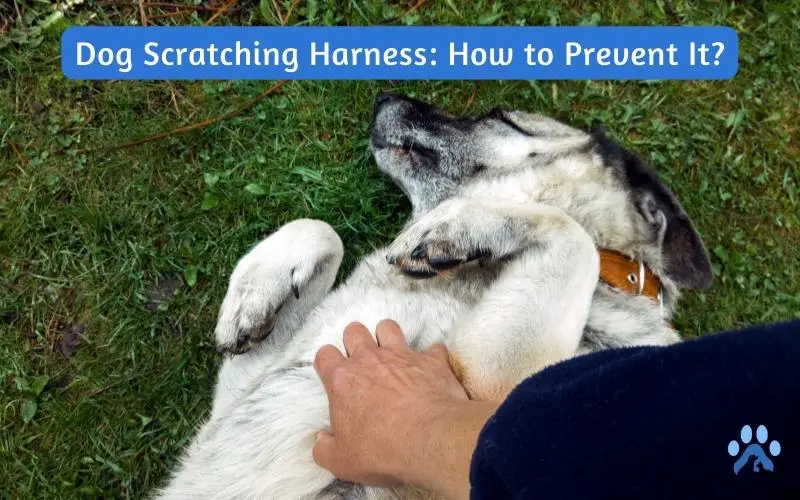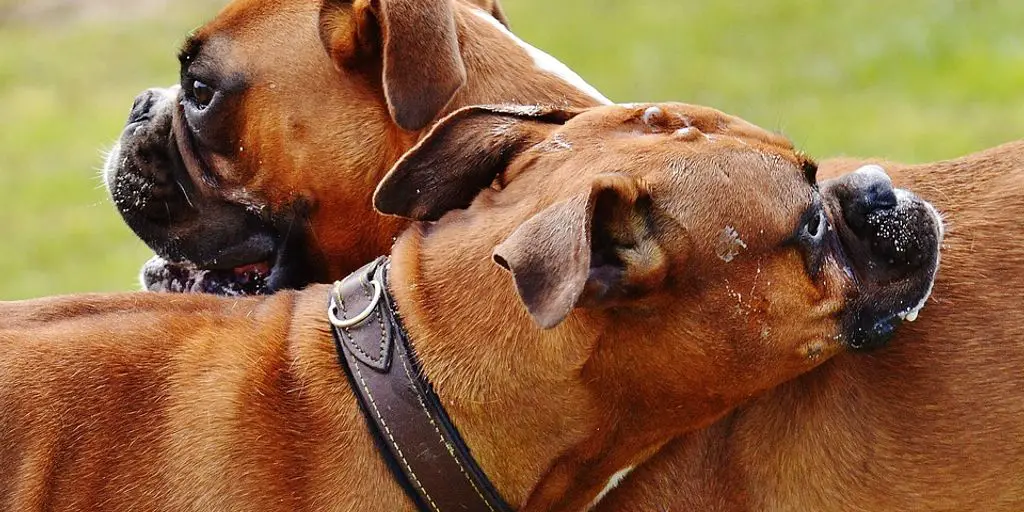When it comes to our beloved pets, it can be perplexing to watch them do seemingly ‘strange’ things with no explanation. One such behavior you may have noticed your dog exhibiting is scratching at its harness or collar.
While this behavior may perplex you, rest assured that your pup isn’t doing it for no reason. If your dog scratches the harness, it might only be because he is uncomfortable or has an issue with it.
There are a few potential reasons why a dog might scratch at a harness:
- The harness might be too tight or loose, causing the dog discomfort. In this case, adjusting the fit of the saddle might help.
- The harness might be made of itchy or irritating materials to the dog’s skin. Switching to a harness made of different materials (such as nylon or neoprene) might help if this is the case.
- The dog might be trying to remove the harness because they don’t like wearing it. In this case, it might be helpful to gradually acclimate the dog to wearing the harness by starting with short periods of wear and gradually increasing the duration over time.
- The dog might be scratching at the harness because they have an itch or discomfort somewhere else on its body. In this case, it might be helpful to check for any signs of fleas or other skin irritations and to address any underlying health issues.
Therefore, in this blog post, we’ll discuss why your dog scratches its harness and explore some measures you can take to help prevent this behavior.
So, without further ado, let’s get started.
Your Dog Doesn’t Like to Stay Restrained
Your dog’s scratching harness is probably not because he doesn’t like the color or style. More likely, it’s because he doesn’t like anything that restrains him.
Dogs are instinctive predators, and part of their prey drive is the need to be able to move freely.
So, when you make them wear a harness, they feel restrained. It can trigger their fight-or-flight response, and they may try to scratch or bite their way out of the restraint.
Therefore, you may need to acclimate him to it slowly, starting with short periods while he’s calm and relaxed. You can also try using a positive reinforcement technique called clicker training to help him associate the harness with something positive, such as treats or praise.
A Harness is an Unfamiliar Object to Him
One of the other reasons why your dog might be scratching his harness is because it’s an unfamiliar object to him. It’s not something he’s used to wearing daily. That’s why you need to give him time to get familiar with the touch of the harness on his neck.
To begin, lay the harness on the ground and give your dog a chance to sniff it and get accustomed to it.
After that, let him wear it around the house for short periods. This will let him acclimate to putting something new and strange on his body. However, if he still seems frightened or anxious, remove the harness and let him sniff it again until he is more comfortable.
After a few days of wearing the harness inside, you can take your pup outside with his new accessory. Let him explore his surroundings while wearing it and become comfortable in his new gear.
Ensure you provide constant positive reinforcement and praise throughout this process. It will gradually decrease your dog’s scratching harness as he understands it’s nothing harmful to him.
Chafing
Chafing is a common problem for dogs who wear harnesses, especially if they are allergic to the material or if the harness is too tight. Hence, dogs usually keep scratching their saddles.
Here are some tips on how to prevent chafing:
Choose the right size of harness for your pup. If the harness is excessively tight, it could irritate your dog’s skin and make him scratch. You can guarantee that the harness fits correctly and pleasantly by picking the appropriate size.
Our Pick
Make sure the straps are adjusted correctly. Improperly adjusting the straps can also lead to chafing. Ensure the straps are adjusted correctly to not rub against your pup’s skin or pull too tightly.
Choose gentle materials for your pup’s skin. Some materials may be too abrasive or irritate sensitive skin. Look for materials like cotton or lightweight mesh that will be comfortable for your dog to wear all day.
Clean and condition the material regularly. This will help keep the fabric soft and supple and reduce wear and tear from regular use so that it won’t irritate your pup’s skin.
Your Dog Might Have a Negative Association With Harnesses
In many cases, dogs scratch at their harnesses because they have a negative association with them.
This could be due to past experiences, such as being pulled too hard or restrained in a way that made them uncomfortable. It could also be due to general anxiety or fear of the unknown.
Whatever the reason, it’s essential to take some time to assess the situation and figure out how to help your dog best feel more comfortable in its harness.
With time and compassion, you may assist your dog in overcoming its phobia so it can go on walks and engage in other activities.
They Don’t Like Being out of the House in a Harness
One of the most common reasons for scratching and chewing is that your pup doesn’t like being out of the house in a harness. After all, harnesses are foreign to them and can make them feel vulnerable or uncomfortable in unfamiliar settings.
Some dogs may also scratch and chew their harness because they don’t like the feeling of tightness around their chest or because it restricts their movement.
If your pup is scratching or chewing its harness because they don’t like being out of the house, there are some steps you can take to help ease its anxiety.
Start by taking short walks around the block before heading out into more crowded areas, as this will help them become accustomed to being outside in a harness.
Finally, ensure your pup feels secure in its harness by double-checking that all buckles and straps are securely fastened.
How to Prevent Dog-Scratching Harness
To prevent dog scratching harnesses, it is essential to regularly inspect the harness for signs of wear or damage and replace it as soon as possible.
Additionally, owners should routinely check their dog’s skin for signs of irritation and immediately discontinue using the harness if any signs are present.
Proper harness fit is also important: it should be snug but not too tight and should not restrict the dog’s movement. Regular grooming can also help reduce skin irritation and discomfort.
Finally, owners can use a leash clip on the harness to reduce the amount of rubbing and tugging, which can lead to scratching.
Conclusion
It’s important to remember that there are many potential causes of dog scratching harnesses, and you can help keep your furry friend happy and healthy with the correct diagnosis, treatments, and precautions.
While some scratching may be expected, it can also indicate a skin condition or underlying medical problem that needs to be treated.
So, try to identify the cause and use techniques such as counterconditioning, desensitization, and positive reinforcement to modify the behavior.
If these methods do not work, it’s best to contact a certified animal behavior specialist for help.



